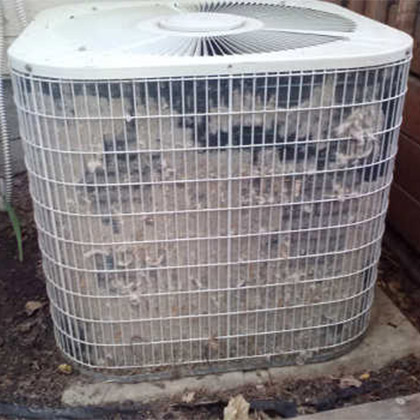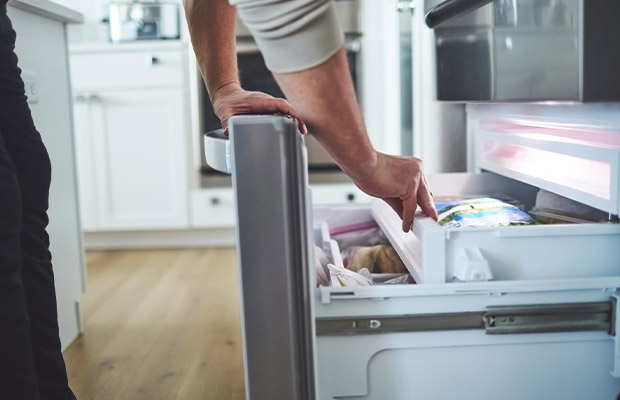But what happens when your GE refrigerator not cooling properly? Though it’s tempting to panic, there are some simple fixes when your GE fridge isn’t cooling.
You might feel compelled to purchase more items than you need because of deterioration in the refrigerator. Due to the short duration of cold storage, it may also be harmful to one’s health.
It might be annoying to constantly hear your phone ring while a repairman is on the other end of the line. Additionally, it might not be feasible to fix the issue with a high repair fee if your warranty has expired and the repair is expensive.
Table of Contents
Why GE Refrigerator Stop Cooling & How to Fix
The good news is that the cause of a GE refrigerator not cooling is frequently simple. We’ll go over the five most typical reasons why your GE refrigerator won’t cool properly and how to fix them.
1. Temperature Settings is Not Set Correctly
When the interior of your GE refrigerator feels warmer than the cold temperature settings indicate, there is probably a problem. Thankfully, rather than being a cooling issue, this is typically a temperature management one.
To determine the ideal cooling temperature for your model, consult the owner’s manual for your refrigerator, and then adjust the temperature as necessary.
The USDA advises keeping food in the refrigerator at or below 40° Fahrenheit to prevent the growth of bacteria if you don’t have access to your handbook. Utilize a different thermometer to check the refrigerator’s temperature.
If the inside is warmer than the refrigerator registers, lower the temperature by a few degrees and give it 24 hours. As the temperature only slightly decreases, reduce it gradually and wait until it at least reaches 4°C.
2. Dirty Condenser Coils
As refrigerant passes through your refrigerator coils, heat is released, assisting in maintaining the refrigerator’s temperature. In most cases, these coils are found at the bottom of the refrigerator, where they are vulnerable to dust accumulation. They are unable to release that heat as a result, which raises the temperature inside your refrigerator.

Every six months, we advise you to clean the coils on your GE refrigerator using a vacuum attachment, an appliance brush, and a facemask (it’s a dusty job). Here’s how to clean refrigerator condenser coils quickly and easily:
- Unplug your refrigerator
- Use your owner’s manual to find the coils on your model
- Remove the grill in front of the coils
- Vacuum the coils with a long, thin hose attachment
- Brush away remaining dust with the appliance brush
- Replace grill in front of coils
- Reconnect refrigerator
3. the Condenser Fan is Malfunctioning.
Your GE refrigerator’s condenser fan is another thing to check if it isn’t cooling. This condenser motor fan improves efficiency by preserving the temperature of the refrigerant coils. Additionally, it prevents the fridge’s interior from heating up excessively.
There are two primary reasons why this fan may be malfunctioning:
- Condenser coils clogged
- Condenser fan motor is broken or obstructed.
The condenser coil on the back of your appliance is likely clogged with dirt, lint, and pet hair. Using a screwdriver, you can either remove it yourself, or you can hire a specialist.
Clean the coil with compressed air and then reinstall it to ensure that it stays clean going forward.
4. Electricity
The most glaring issue is a lack of electricity, which is surprisingly easy to ignore unless you frequently open the GE refrigerator at odd hours of the night. By opening the door and looking for a light, you can quickly determine whether the refrigerator is powered by electricity. The device has power if the light illuminates.
If the power does not turn on, there are many options available, along with a noticeable lack of operating noise. Using a multimeter or another socket, check the current flowing through the device. Alternately, you might need to swap out the plug or modify the plug fuse.
5. the Defrost Timer Has Been Programmed Improperly.
Defrost timers that have been set incorrectly or not at all are the most frequent culprits of GE refrigerators that won’t chill.
The defrost timer has only two options: off or on.
If the refrigerator has been running for more than 24 hours without cooling, it is turned off.
Since it has been running nonstop for the past 24 hours, which is a good indication that it is on, the refrigerator will start up again once the temperature drops.
If a defrost timer is set, a compressor won’t ever turn on. It will continue to function on the refrigerator for a while, or until the freezer compartment reaches a temperature of -10 degrees Fahrenheit (roughly -18 degrees Celsius).
The following procedures can be used to reset the GE refrigerator timer:
- It will be possible for you to turn off the power by unplugging the machine.
- After that, you must completely empty the lower freezer door shelf.
- Then, until the “Freezer” button blinks, push and hold it.
- Now you can type in the time you want.
6. Damaged Refrigerator Door Gaskets
When the door of your refrigerator is closed, the rubber gasket maintains a tight seal, keeping cold air inside. As a result of improper sealing caused by a dirty or torn gasket, cold air will be able to escape from the refrigerator and heat up inside.
Examine the refrigerator gasket carefully for debris or damage. We advise replacing a gasket if it has tears or other damage, even though most dirt can be gently scrubbed away with a wet cloth.
7. Malfunctioning Temperature Sensor
If the fridge’s computer isn’t getting the right data, adjusting the thermostat to the right temperature will do no good. The control board receives information from the temperature sensor, or thermistor as most people refer to it, and it also detects temperature.
If the temperature is not reaching the ideal temperature for a refrigerator, the thermistor needs to be changed. It is crucial to remember to unplug the cord from the wall outlet before installing the component if you’re doing this on your own.
8. Dials for Thermostats
The thermostat on your GE appliance was probably set between 35 and 37 degrees Fahrenheit. However, it’s simple to knock the dial without realizing it. All of the more recent GE models mentioned above have a dial inside the fridge compartment, whereas fridge-freezer units have a dual temperature dial.
In a dual temperature dial, the freezer is controlled by the left dial, and the refrigerator is controlled by the right dial. The temperature can be adjusted on a dial from 1 to 9, with 1 being the hottest and 9 the coldest. Turning the dial to 0 turns off the cooling. Don’t panic on the first day because the cooling unit needs 24 hours to start functioning after installation.
Read More:
Final Words on GE Refrigerator Not Cooling
In your home, refrigerators are only used to store food at a temperature that is colder than the air around it. If your GE refrigerator is currently not functioning properly, it is crucial that you find a quick fix.
This easy-to-follow guide on identifying and repairing different errors pertaining to the temperature of the unit is a great place to start.
It’s crucial to comprehend all of the typical causes of this problem. Before calling a support center, it is essential to understand the extent of a problem. This prevents repairmen from overcharging you for small fixes. Due to this, we have made an effort to address all the common issues that could lead to your GE refrigerator losing its cooling ability on a single page.
Hiring a professional is a good idea if you’re having trouble diagnosing the issue or lack the necessary skills to replace and repair mechanical parts.
Read More:
FAQs
Why is My GE Fridge Not Cooling But Freezer Works?
A defrost issue could result in the refrigerator compartment not cooling if the evap unit is iced up. This might be brought on by a broken defrost heater, broken defrost thermostat, clogged drain tube, or broken control board.
What is the Life Expectancy of a GE Fridge?
According to the United States Department of Energy, refrigerators last approximately 12 years.

